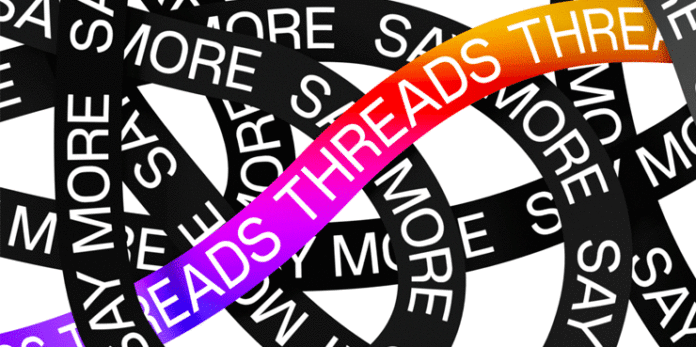In July, Meta launched a new social media platform to compete with Twitter, or ‘X,’ called Threads. Within its first week, 100 million users registered for the website – all anxious to participate in the latest trend.
Social media is a great tool for boosting brand awareness and bringing potential shoppers to your website, and Threads is no different. In this article, we provide all the details so you can see if Threads is right for your retail business, as well as how best to use the platform.
Is Threads Right For Your Brand?
Like all new mediums available to businesses, it’s always important to see if it aligns with your brand. Just because Threads is new doesn’t mean you should join. Reilly Newman, Brand Strategist at Motif Brands, notes that the platform has already lost more than 80% of its initial users since its launch.
“It’s a brand decision to ensure the platform agrees with your position in the market and the audience you are trying to reach. It also is a business decision because you will invest time, effort, and money into the platform. If a medium, like Threads, is deemed like a good decision on both of these fronts, then it could be worth a retailer’s time to experiment on the platform,” Newman says.
Carol Wilson, Editor-in-Chief at YouComfort, suggests that home decor retailers can capitalize on Threads’ opportunity to establish a more personal and direct rapport with their audience. The real-time interaction that the social media platform promotes can be a goldmine for businesses aiming to cultivate a loyal community around their brand.
The key here is to meet with your team and discuss if Threads is right for your marketing strategy. Put together a list of your goals and see if the platform can help you meet them.
Can Threads Boost Business?
“Much like Twitter(X), Threads is best used to join conversations with your audience,” Newman suggests. “Many retailers will try to use it to promote and sell their products, which would be counter to the Threads platform because it is simply the wrong mindset. Being conversational and even funny with short lines of text can do the trick for engagement, which will increase brand awareness.”
Alvarez & Marsal discuss five ways in which Threads can help boost business:
- Timing. ‘X’ has been in a state of confusion and perpetually bad public relations (PR) since Elon Musk took over. And now with the recent price hikes, users are more than happy to test a qualified competitor. Brands can take advantage of this opportunity by creating a profile and posting regularly while engagement and growth are peaking on the platform.
- Messaging. This is a unique chance for retailers to speak to their existing following at their most engaged, on a completely new platform. Plus, there’s an excitement in that novelty that shouldn’t be squandered with sales/conversion messaging. Instead, brands can use this creative opportunity to showcase relatability and personality in a less polished voice than would otherwise be possible with the Instagram aesthetic.
- Low Lift. Threads allows retailers to create a profile and add their entire Instagram following practically instantaneously. With the native format of the platform being text-based, significantly fewer resources are required to produce content in comparison to video or even static assets. This is an opportunity to do more with less, and as mentioned previously, brands can regularly post (mindfully, of course) to maintain engagement.
- Cross-Platform Exposure. Threads are shareable on Instagram as well as Facebook, and by doing so, brands can drive additional exposure beyond their original post. Cross-posting also increases awareness and fear of missing out (FOMO) for Threads, potentially increasing the brand’s organic following in parallel with general platform adoption.
- Audience Targeting. On Facebook and Instagram, the audience targeting—especially first-party—is significantly more robust than on ‘X’. When advertising becomes available, that functionality will almost certainly extend to Threads as well. Brands that establish an organic presence will have the advantage of engagement data from those posts to inform their creative strategy when advertising becomes available.

5WPR’s 2023 Consumer Culture Report also reveals key factors when it comes to social media purchases. The report found these three in particular help influence customers to splurge:
- 3-in-10 customers reported they can be convinced to splurge through word-of-mouth. This rises to 4-in-10 of those ages 25 to 35, making it the most influential factor when it comes to splurging.
- The second most identified factor was paid ads on social, with 1-in-4 shoppers below the age of 34 reporting they’re influenced to splurge by these posts.
- The third most influential overall was influencer’s posts on Instagram or TikTok. However, consumers aged 16 to 24 actually find these posts slightly more influential than paid ads.
While Threads may not be on the list of most influential platforms for shoppers, it still provides another opportunity for retailers to get some eyes on your brand and website, where you can then entice customers with promotions to make a purchase.
How Can Retailers Be Successful on Threads?
To be successful on the platform, Newman suggests that brands be relational. This can be best implemented by listening, responding to others and being conversational. Relational features like these make brands feel more human and authentic. Rather than only talking about yourself, listen and talk with your audience, share their interests and keep them as the focus.
“A content strategy for Threads would be similar to a strategy for Twitter(X). Just as we have seen brands like Wendy’s, Old Spice, and Denny’s be successful with unique content that leans heavily on humor, we can apply some of this strategy to a Threads content strategy. Wordplay and clever quips would do best as they can be supplemented with some imagery and important information like new product releases or seasonal sales,” Newman advises.




